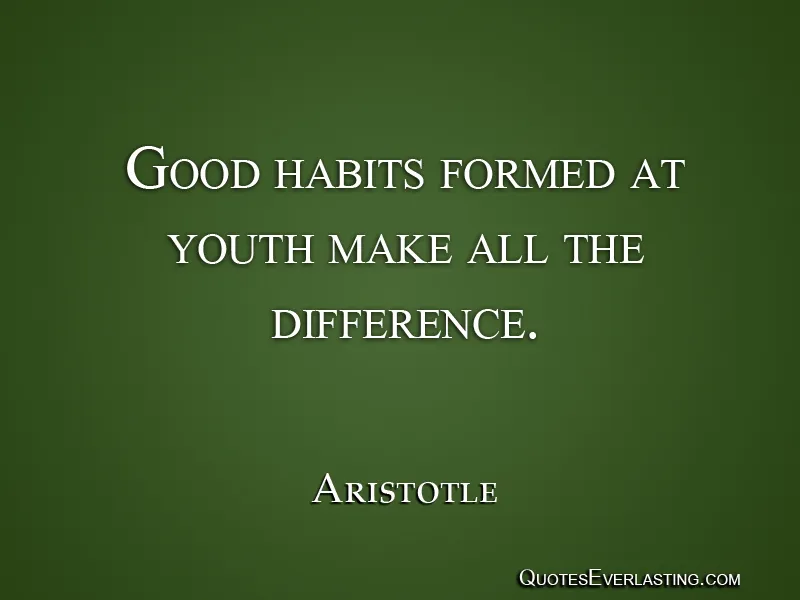The Psychology of Habit Formation: Building a Better You
Introduction
Habits are silent architects of our lives. They go on to shape our routine and influence our decisions to ultimately determine our outcome. From the time we wake up in the morning until we go to bed at night, habits are at work—either to drive us or drag us.
Mastering the mechanisms of habit formation is a very powerful route to self-improvement. If you know how to decode the psychology behind your habits, you will unleash full potential for long-lasting positive change.
You are about to learn ways to unleash the power of habits to realize your goals, increase your productivity, and unlock your potential. You stand at the threshold of changing your life—one habit at a time!
Unvealing the Habit Loop: Understanding How Habits Work
At the core of every habit is a simple loop, often referred to as the “habit loop.”
The habit loop consists of three elements: the cue, the routine, and the reward.
Cue: The cue is the thing or event that makes one react out of habit. It could be a time, a location, an emotional state, or even some already done action. To illustrate, for this example, a cue could simply be passing by a coffee shop.
Routine: The routine is the actual response, or the real behavior or action taken in reaction to the cue. Buying and drinking the latte are the routines in this scenario.
Reward: This is what a person derives in terms of benefit or satisfaction from performing that routine. In the case above, it would be the taste of the coffee and the caffeine boost.
Knowledge of these elements is important in the diagnosis of the habits you want to keep as well as in the design of new habits.

The Power of Repetition
Habits are formed through repetition. Every time you perform a routine in response to a cue, you strengthen the neural network in your brain. Neuroplasticity is a process by which the brain makes itself reorganize and create new neural connections and pathways. Generally, this happens over time through repetitive action; the more automated a habit becomes, the less effortful it tends to be.
Think of it as breaking a path through the woods. The more that you walk along a path, the clearer and more easy to follow it is. Likewise, repeating the habit loops basically strengthens that neural pathway, making it easier to follow the same routine in the future.
We are tempted and excited by the idea of cultivating new habits, yet something always holds us back. It could be experienced in an act of procrastination, making excuses, or generally starting without motivation.
These are some ideas on how you can break free from these barriers.
Habit stacking: This is when you can align a new habit with an existing one. For example, if you are already in the habit of brushing your teeth in the morning, add the habit of flossing to this pre-existing habit.
Minimize friction: Remove the pain involved in getting started with a new habit.
For example, if you would like to exercise in the mornings, lay out your workout attire the night before.
By having an understanding of the psychological factors that create resistance and some practical strategies for overcoming such obstacles, you stand the chances of succeeding in building new habits.
Designing Habits Desirable from Intention to Action
Such definite and clear goals function like the compass in your journey of habit formation. It’s easy to get lost in the wide ocean of possible habits with no clear destination in your mind. Your goal definition gives you a sense of purpose and direction.
The SMART framework could be very useful for this. A SMART goal should be:
Specific – clearly defined and detailed
Measurable – quantified by specific metrics.
Achievable: Realistic and within your reach.
Relevant: Aligns with your life’s goals and values.
Time-bound: Specifically includes a start and end date.
For example, instead of a vague goal like “get healthier,” a SMART goal would be “lose 5 pounds by putting in 30 minutes of exercise five times a week for the next month.”
Selecting Good Habits
Selecting good habits is the most important aspect to follow a habit in the long term. Here are some tips that would help you in proper selection:
Align with your values -Choose habits that align with your fundamental beliefs and principles
Smaller, more achievable steps – Start by embracing easy habits
Start with the high-impact habits – Identify those habits to have the most positive effect in your life
Consider your resources – Take stock of your time and energy and your resources.
Remember, progress is more important than perfection. Small, consistent steps will lead to tremendous results over time.
Designing an Irresistible Routine
Let’s confront it: if your habits are not enjoyable, you’re not going to follow them.

Here are some ways to make your habits more rewarding:
Reward yourself: Get a reward for every small win you achieve.
Make it fun: Make it enjoyable by finding ways to include fun in the routine.
Leverage habit stacking: Build new habits onto existing habits to make it one continuous flow.
Experiment and get what works—no crime in trying out a few methods until you get your cup of tea.
Coupling habits: Couple up new habits to already existing ones. For instance, if you already meditate every morning, append a short gratitude practice afterward. This helps create an association between the two activities in your head and better assurance that both of them will stick.
Implementing Your Habits: Strategies for Long-Term Success
Effective planning is the backbone of successful habit formation. By putting your habits into your schedule, chances of performing them consistently are maximized.
Create a realistic calendar: Always start by first acknowledging free times in the day, then set specific times for new habits. Be sure to put plans in sync with energy levels and your natural rhythms.
Prioritize: Determine what order you’ll be doing your habits in, from most important/difficult to least.
Be flexible: Know that life will get in the way, and adjustments to your schedule may be necessary. There is a need to build in flexibility for these kinds of events.
Building Accountability and Support
Having a support system can significantly improve your chances of success.
Find an accountability partner: Share your goals with someone who can motivate and support you. You’re then bound to regular check-ins which keep you on track and motivated.
Tracking systems: Use habit trackers, journals, or apps to monitor your progress. One of the greatest motivators is seeing improvement.
Some good technology: Use habit tracking apps which incorporate workout reminders, progress tracking, and community support.
Embracing Mistakes and Overcoming Challenges
Accept that regressions are part of the process of building new behavior; occasional slip-ups are not the end of the world. Don’t let an occasional one make you throw in the towel for the rest of the day.
Show self-kindness: go easy on yourself when you miss a habit. Avoid any form of self-critic and instead, re-focus on how you are going to get back on your habit.
Identify the triggers: pin-point the reasons for the regression to avoid another occurrence in the future.
Learn from the errors; setbacks are an opportunity to get better.
Celebrate small wins: Any step forward, no matter how small, should be recognized in order to keep yourself moving.
Adopting a growth mindset and focusing on progress rather than perfection enables you one of achieving success over challenges and making long-term positive habits.
Hacking Your Habits for Lasting Change
The Ripple Effect of Habits
Positive habits have this very cool way of automatically spilling over into other areas of your life.
What starts off as a small change within you can escalate to become large, beautiful change in various aspects of life.
For example, inculcating the practice of daily exercise can lead to physical fitness, an abundance of energy, and a much better mood. All these end results can spill into other areas of life as well, including high productivity, good relationships, and high self-esteem.
Creating a Sustainable Way of Life
Positive build on the habit, and you have a strong basis for success and well-being in the long run. Look at habit formation as a process, and not a destination at all.
Maintain Balance: The risk of burning out always exists while building new habits. Give time for relaxing, hobbies, entertainment, and being social.
Growth is a constant and personal process. One should be able to grow as their life demands, leading them to new habits that need to be developed from time to time. One should step back and think about what their goals are and whether the habits in question are going to serve them.
Thus, with a continuous learning mentality and adaptiveness, one is victory-ready in any life scenario and can, therefore, realize the innate potential that lies within.
Conclusion: The Key to Unlocking Your Potential
Master your life through an understanding of how habits are created. You will deconstruct the habit loop, nail down clear goals, and use really working strategies, which will enable you to harness the power of repetition and bring lasting positive change.
New habits take time to build. Acknowledge small wins, learn from failed attempts, and most importantly, be kind to yourself. Consistency and perseverance will unleash your potential so that you can live a life that you love.


